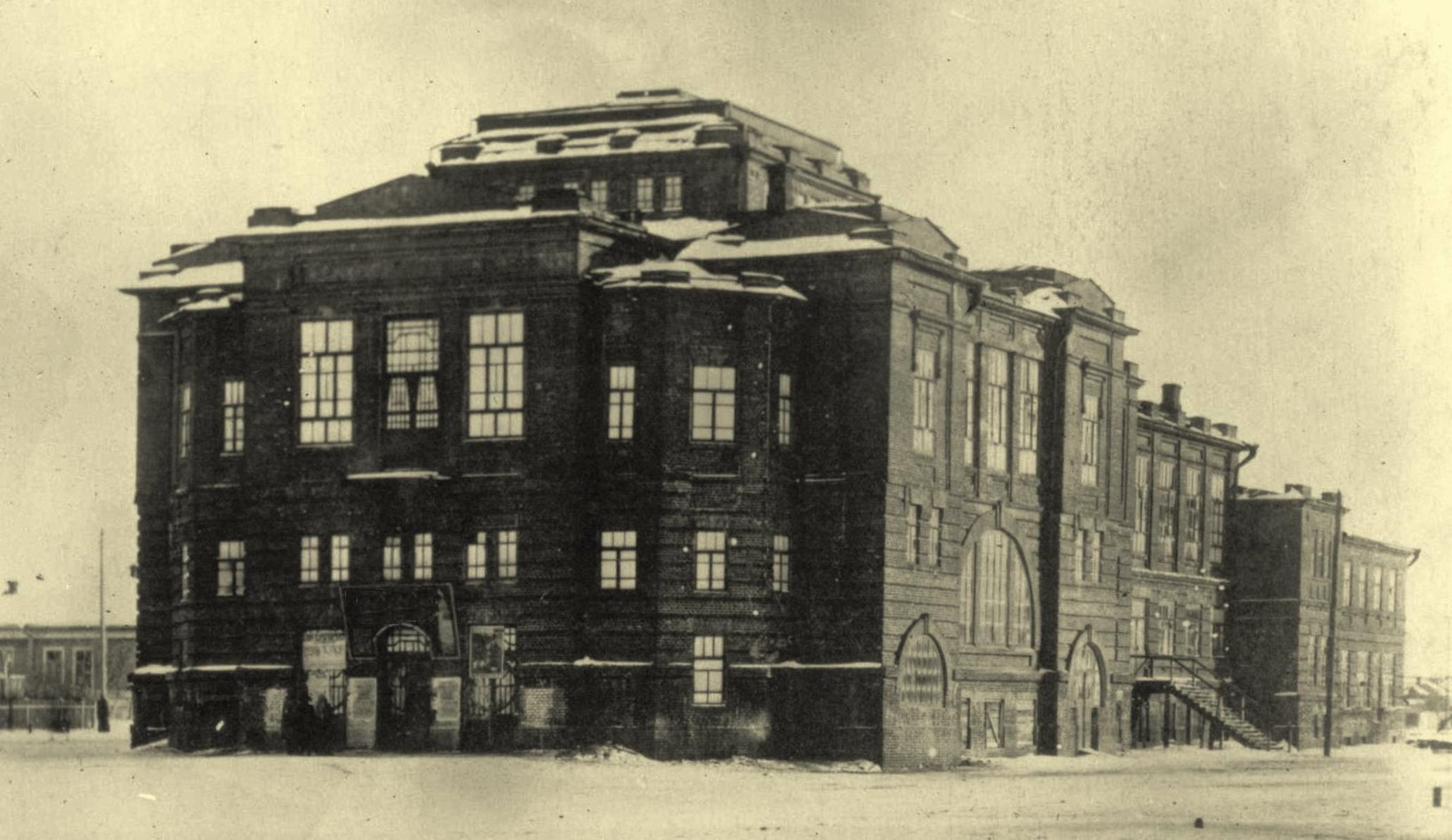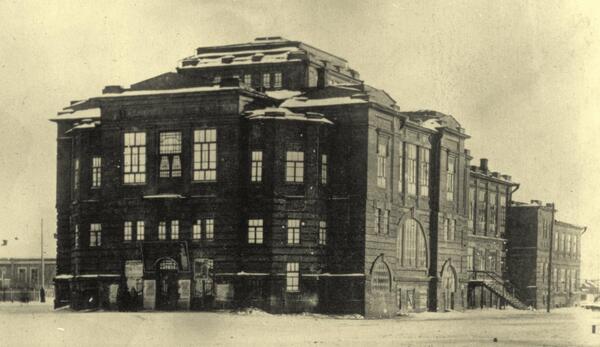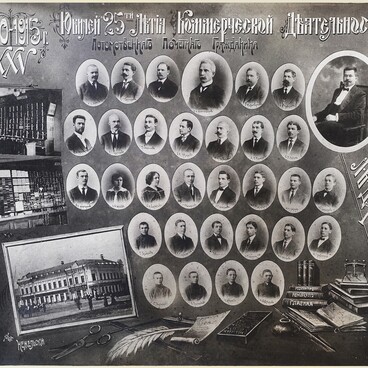From 1911 till 1915 the construction of People’s House was organized in Borisoglebsk. This term was used in pre-revolutionary Russia for cultural and educational centres. The construction was initiated by philanthropist Yefim Myagkov, who wanted to create a centre of culture and leisure in his hometown. Yefim Myagkov came from a family of merchants, he dedicated his whole life to business, journalism and philanthropy. He became famous after his collaboration with Novoye Slovo (The New Word) magazine and founded Molodaya Rossiya (Young Russia) and Kolokol (The Bell) publishing houses famous for their social-democratic focus. The construction was finished in 1915 with the use of public funds.
The building has the form of a two-storey house made of brick, rectangular in plan, with rustic ground floor. Side views were decorated with Romanesque windows, the second floor’s facades were decorated with pilaster strips, the cornice was decorated with denticles.
From the very beginning of its existence People’s House was a popular place with amateur theatre performances and exhibitions organized there on a regular basis. In 1918, thanks to the activity of Serge Mikhailovich Volkonsky, who was a grandson of a Decembrist Sergey Grigoryevich Volkonsky, the exhibition Decembrists as the First Fighters for Freedom was organized there.
In the 1920s the building was used as a cinema under the name Volcano, however in 1928 it was given the name of the famous revolutionary and a democrat Nikolay Chernyshevsky. The change of its titles wasn’t finished though, and in 1937 the building was renamed into The Borisoglebsky Kolkhoz and Sovkhoz Theatre. Since that moment the active theatrical life of former People’s House started, the permanent theatre group was formed, and the theatre got its artistic director in the person of Pavel Trapeznikov.
Only in 1943 the former name The Chernyshevsky Borisoglebsk Drama Theatre was returned to the theatre. The cultural and theatrical life of former People’s House actively continues in the 21st century as well. Currently the building functions as a drama theatre with plays and performances being staged there.
In 1982 People’s House was given the status of an object of cultural heritage of regional significance, and nowadays it is protected by the state as the monument of urban planning and architecture.



